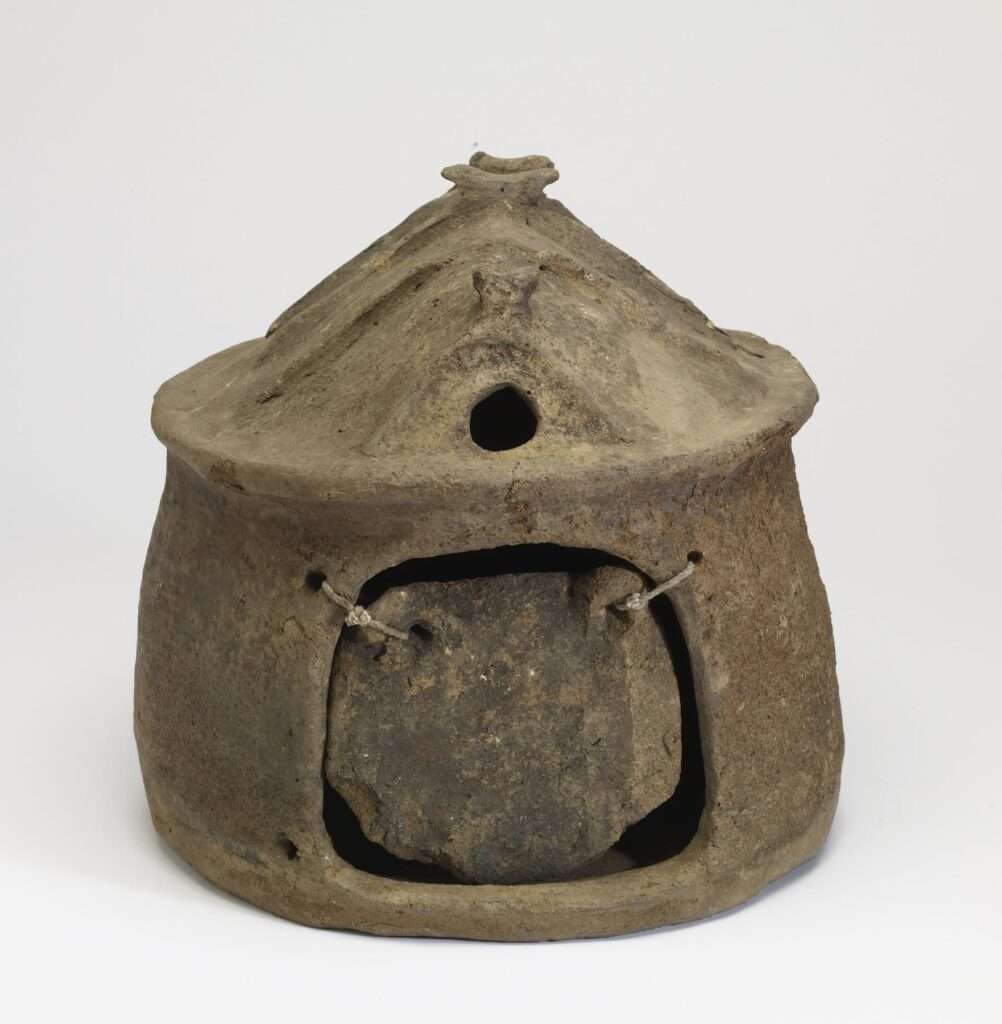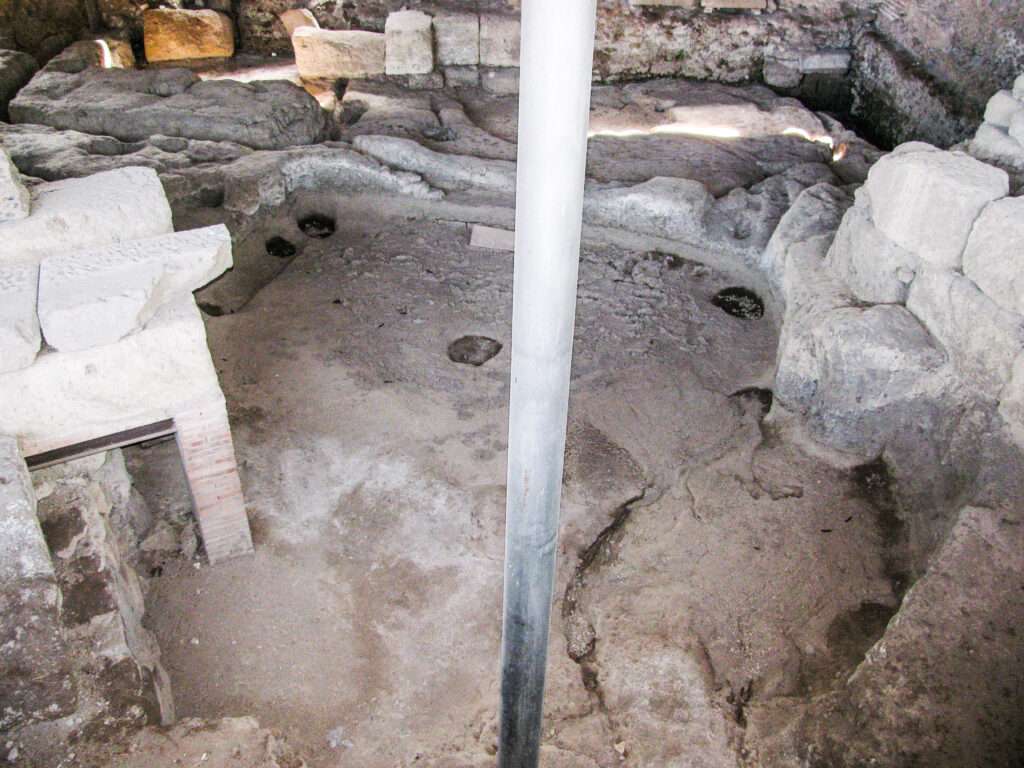The house that Rome’s legendary founder, Romulus, lived in during the eighth century BC was located on the southwest corner of the Palatine Hill.
Archeologists and historians understand where the hut was likely located as the Romans were meticulous when writing about their society. Very helpful when piecing together the history of an ancient civilization.
It was a simple hut, likely made out of clay with a possible wooden frame and a thatched roof – a far cry from the wood, marble, and concrete that became a hallmark of any classical city.
Several sources make note of the location of Romulus’ house, which can also be attested to in the later years of the empire.

Dionysius of Halicarnassus notes in his Roman Antiquities, Book I, LXXIX.XI, discusses how the local people of the area lived and where the Casa Romuli was located:
“But their life was that of herdsmen, and they lived by their own labor, generally upon the mountains in huts which they built, roofs and all, out of sticks and reeds. One of these called the hut of Romulus, remained even to my day on the flank of the Palatine Hill, which faces towards the Circus.”
Plutarch writes in his book, The Parallel Lives – the Life of Romulus, XX.IV, an agreement was struck between the leader of the Sabines, Titus Tatius (of Tarpeia and Tarpeian Rock fame) and Romulus to combine their communities. He explains where Tatius and Romulus had set up their homes:
“Tatius dwelt where now is the temple of Moneta, and Romulus beside the so‑called Steps of Fair Shore; these are near the descent into the Circus Maximus from the Palatine.”
(It must be noted that the author of the site of this source believes that the original translation of the “Steps of Fair Shore” is incorrect. There was a set of stairs at the Palatine Hill called the “scalae Caci” or the “Steps of Cacus”).
The fourth-century AD administrative texts, known as the Regionaries or Regionary Catalogs that come to us from the Notitia Dignitatum and Curiosum (written in the fifth century) also note that the Casa Romuli was still in existence at that time. So, we know that the hut existed or there was a commemorative place marked where the hut stood in the fourth and fifth centuries AD. This can be located under Regio X Palatium – casam Romuli, here.
The Romans took their history seriously and were very proud of their origin story, with the Hut of Romulus taking on a somewhat religious significance within the city, repairing it and holding religious festivals in or around it.
Writing about the hut, Dionysius of Halicarnassus mentions it in Roman Antiquities, Book I, LXXIX.XI:
“….it is preserved holy by those who have charge of these matters; they add nothing to it to render it more stately, but if any part of it is injured, either by storms or by the lapse of time, they repair the damage and restore the hut as nearly as possible to its former condition.”
Upon the death of Agrippa, Augustus felt a sense of profound loss and sorrow. The loss of such a noble Roman was similar to any tremendous military defeat or plague that befell the city, which caused great chaos. Cassius Dio notes in his book, Roman History, book LIV, XXIX.VII:
“The death of Agrippa, far from being merely a private loss to his own household, was at any rate such a public loss to all the Romans that portents occurred on this occasion in such numbers as are wont to happen to them before the greatest calamities. Owls kept flitting about the city, and lightning struck the house on the Alban Mount where the consuls lodge during the sacred rites. The star called the comet hung for several days over the city and was finally dissolved into flashes resembling torches. Many buildings in the city were destroyed by fire, among them the hut of Romulus, which was set ablaze by crows which dropped upon it burning meat from some altar.”

On another occasion, Cassius Dio writes of the Romans angering the gods, with another calamity befalling the home of Rome’s legendary founder in book XLVIII, XLIII.IV:
“Now, many events of a portentous nature had occurred even before this, such as the spouting of olive oil on the bank of the Tiber, and many also at this time. Thus, the hut of Romulus was burned as a result of some ritual which the pontifices were performing in it; a statue of Virtus, which stood before one of the gates, fell upon its face, and certain persons, becoming inspired by the Mother of the Gods, declared that the goddess was angry with them. For this reason, the Sibylline books were consulted, and they made the same declarations and prescribed that the statue should be taken down to the sea and purified in its waters. Now, when the goddess was taken out a long distance from the land into the deep water and remained there a good while, being brought back only after a long time, this circumstance also caused the Romans no little fear, and they did not recover their spirits until palm trees, four in number, sprang up round about her temple and in the Forum.”
The Romans seem not to know how to look after their own stuff. This is why we can’t have nice things! It should be noted that the temple mentioned here in the Forum was actually located on the Palatine Hill.
Plutarch writes (despite the other instances of carelessness and misfortune!) that the Romans cared deeply for the hut (that is, of course, until calamity strikes again). In The Parallel Lives – the Life of Romulus, XX.V, he recalls:
“There also, it is said, grew the sacred cornel tree, of which the following tale is told. Romulus, once, in trial of his strength, cast thither from the Aventine hill a spear, the shaft of which was made of cornel wood; the head of the spear sank deep into the ground, and no one had strength to pull it up, though many tried, but the earth, which was fertile, cherished the wooden shaft, and sent up shoots from it, and produced a cornel-trunk of good size. Those who came after Romulus preserved this with religious care as one of the most sacred objects and walled it in. And if any visitor thought that it was not green nor flourishing but likely to wither away and die, he immediately proclaimed it loudly to all he met, and these, as though helping to save a house on fire, would cry, “Water! Water!” and run together from all sides carrying full buckets to the place. But when Caius Caesar, as they say, was repairing the steps about the enclosure, and the workmen dug here and there in the neighborhood, the roots were inadvertently destroyed, and the tree withered away.”
Modern archeology has also followed the sources and uncovered what appears to be a part of the hill where houses were likely situated.
Check out the YouTube video below by the Toldinstone Footnotes channel. Here, the host speaks to Paolo Carafa, Professor of Classical Archeology at Sapienza University of Rome.
The whole interview itself is fascinating. They get into the specifics of the Casa Romuli – the history, location, and how they determined what was built on that area of the Palatine Hill at around the 15-minute mark.
Sources:
Dionysius of Halicarnassus – Roman Antiquities (Bill Thayer) – https://penelope.uchicago.edu/Thayer/E/Roman/Texts/Dionysius_of_Halicarnassus/1D*.html
Plutarch – The Parallel Lives: The Life of Romulus (Bill Thayer) – https://penelope.uchicago.edu/Thayer/E/Roman/Texts/Plutarch/Lives/Romulus*.html#ref42
Notitia Dignitatatum – Regionaries (Bill Thayer) https://penelope.uchicago.edu/Thayer/L/Gazetteer/Places/Europe/Italy/Lazio/Roma/Rome/_Texts/Regionaries/text*.html#C10.2
Cassius Dio – Roman History (Bill Thayer) – https://penelope.uchicago.edu/Thayer/E/Roman/Texts/Cassius_Dio/54*.html

